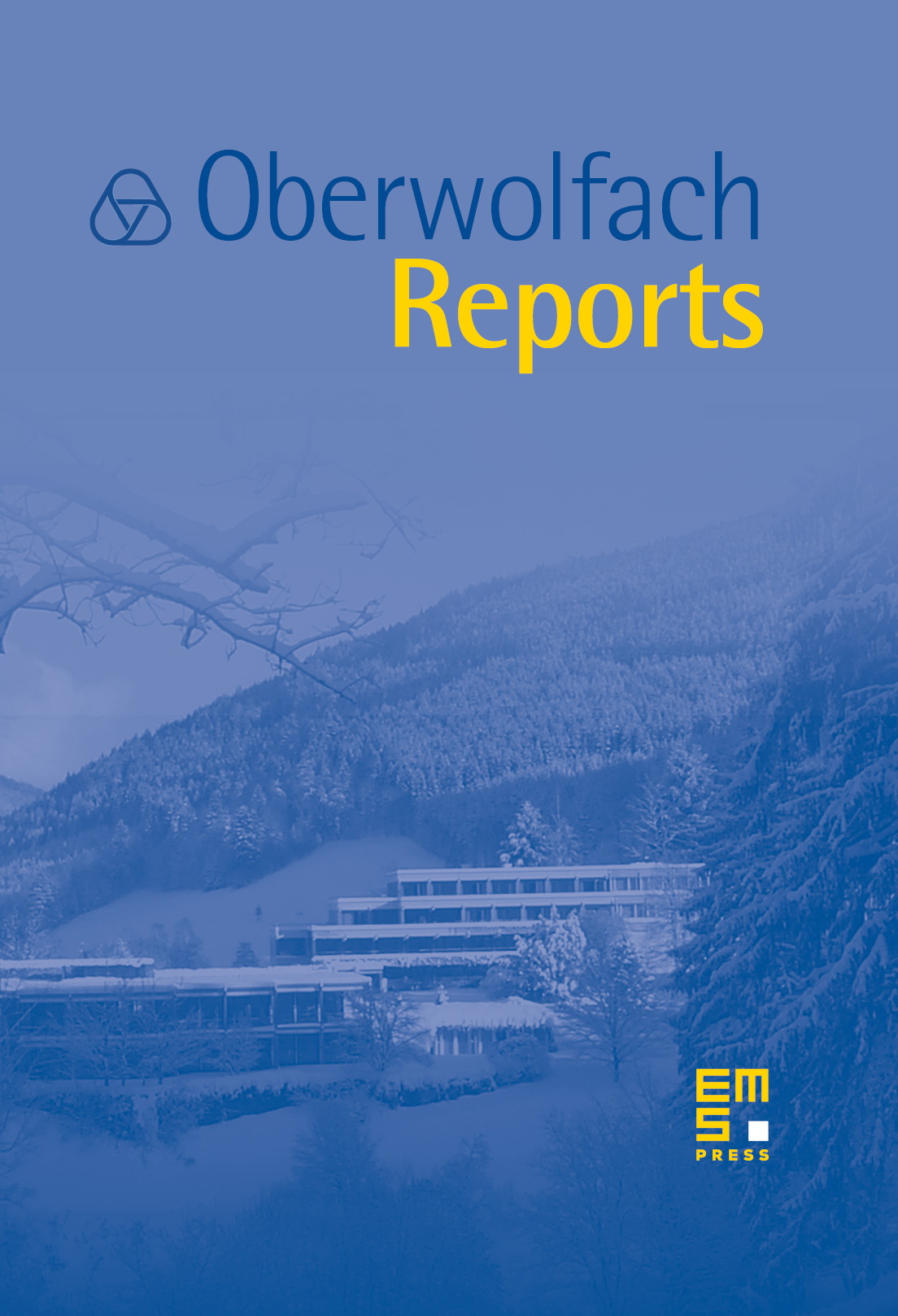Computational Electromagnetism and Acoustics
Ralf Hiptmair
Eidgenössische Technische Hochschule, Zürich, SwitzerlandRonald H.W. Hoppe
Universität Augsburg, GermanyPatrick Joly
INRIA Rocquencourt, Le Chesnay, FranceUlrich Langer
Johannes Kepler Universität Linz, Austria

Abstract
The Oberwolfach Conference on Computational Electromagnetism and Acoustics, held Feb 5–9, 2007, at the Mathematisches Forschungsinstitut Oberwolfach, was already the second in series, following the 2004 Oberwolfach Conference on Computational Electromagnetism. This time the scope was slightly broader, because there has been substantial progress in numerical techniques for high-frequency wave propagation. In this regime, the mathematical and numerical challenges in acoustics are very similar to those arising in the simulation of electromagnetic fields. Usually new ideas and methods are first explored for acoustics and then adapted to electromagnetics. Moreover, many researchers are active in both fields. So it is natural to cover them in the context of a single event.
Like the previous meeting, the 2007 conference brought together more than fifty researchers active in the field, hailing from more than 10 countries. Among them were a large number of leading experts, but also quite a few students and postdoctoral fellows. At this point the organizers acknowledge the generous support of the European Union and NSF that covered expenses for young European and overseas participants. The majority of the participants were applied mathematicians, but a sizable number of people with a background in engineering also attended, as appropriate for a field with close ties to engineering and the sciences.
A total of 28 presentations was given at the conference, eight of which were meant to give a survey of particular numerical techniques. They covered the following topics:
- *High order integral equation methods} by O. Bruno, page 284,
- Robust integral equation methods for high-frequency scattering by I. Graham, page 308,
- Plane wave basis functions} by P. Monk, page 341,
- Getting even with the Maxwell stress tensor by A. Bossavit, page 283,
- Discontinuous Galerkin methods for the Maxwell eigenvalue problem by A. Buffa, page 288. We must not forget to mention that Annalisa Buffa was awarded the first Oberwolfach Todd Fellowship during the workshop. She received the prize from the director M. Greuel for her many fundamental contributions to the numerical analysis of partial differential equations.
- Discontinuous Galerkin for time-domain electromagnetics: Pros and cons by T. Warburton, page 357,
- Non-spurious spectral-like elements for Maxwell's equations by G. Cohen, page 297,
- Multiscale methods for plasma modeling by P. Degond, page 300.
As is typical of an event that is focused on an area of applications rather than a specific mathematical technique, talks varied a lot in style and scope, ranging from discussions of specific theoretical issues to general discussion of a computational method. Nevertheless, all of them managed to convey exciting new insights and developments. Thus the conference made it possible to catch a glimpse of the future of computational electromagnetism and acoustics. The following extended abstracts will also enable the reader to keep abreast of many crucial trends in the field.
Cite this article
Ralf Hiptmair, Ronald H.W. Hoppe, Patrick Joly, Ulrich Langer, Computational Electromagnetism and Acoustics. Oberwolfach Rep. 4 (2007), no. 1, pp. 273–370
DOI 10.4171/OWR/2007/05